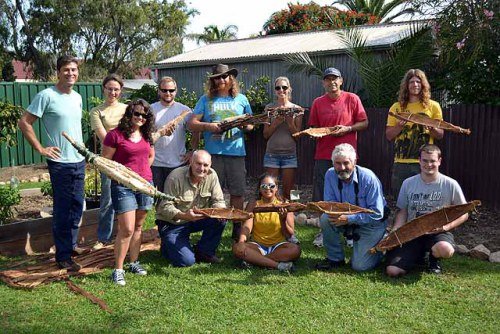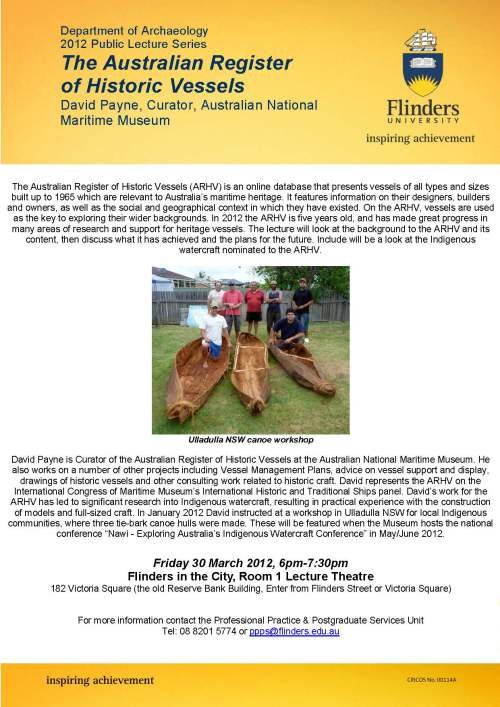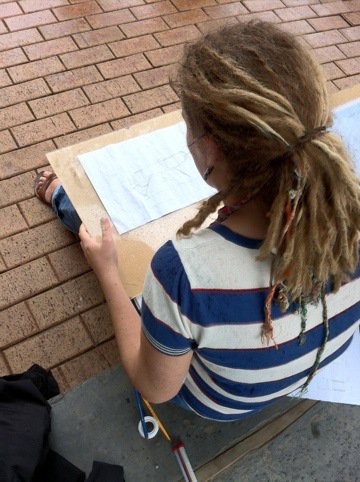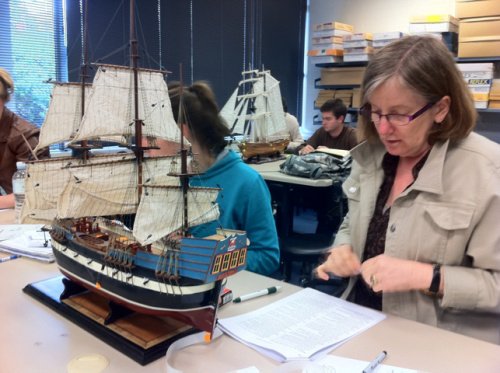
Our canoe workshop. Top, L to R: Mark Polzer, Wendy van Duivenvoorde, Jason Raupp, Zidian James, Rachel Powell, David Payne, Jacob Jordan. Bottom, L to R: Jennifer McKinnon, John Naumann, Sheena Rodrigues, Roger Halliday, Jonathan Nicholls
We’ve completed our second and last day of the Indigenous canoe building workshop with David Payne of ANMM (more details in previous post). Many of us had our doubts that we’d be able to make working, floating watercraft out of the pile of stringbark and paperbark that lay before us on the first day. However we managed to make five different types of Indigenous watercraft by the end of the workshop! These include a sewn bark canoe, a tied bark canoe, a raft, a bundled paperbark canoe and a “shopping trolley” as David has called it. With a good amount of instruction from David and attention to detail we all managed to make a model that resembled and potentially could even perform as a watercraft. I think we all learnt that the skill and knowledge Indigenous watercraft builders need(ed) to make useable vessels for transport, movement and procurement of food is more than we expected.
Our second day of canoe building included a lot of excitement. We finally were able to light our fire in order to burn off the exterior of our bark canoes we built the previous day. We also had a visit from students in the Screen and Media program who filmed our activities and interviewed David. The most interesting aspect of the workshop to me was how we all needed to improvise. We had a certain set of materials and basic tools but from those and our surroundings we improvised to make our canoes work. For example, we needed sharp tools to sew our bow and stern of the bark canoe together, so one student found that a palm tree in our yard had very sharp spikes on it. She took one of the thorns, poked a hole in it and threaded her line through it to act as a needle and sewed her canoe together. Brilliant! Based on his own research, David related that the communities that built/build canoes take the same sort of approach. They work with what they have available. In the end we had a great time and hope that another workshop will eventuate. I could see this as being an annual event. Next time, though, we are going for the full scale model!
Thanks again David for a wonderful workshop and a stimulating public lecture. Also, thanks to SA Museum Keryn and her crew for procuring our raw materials. Stop by office next week if you want to see some of our models on display…





